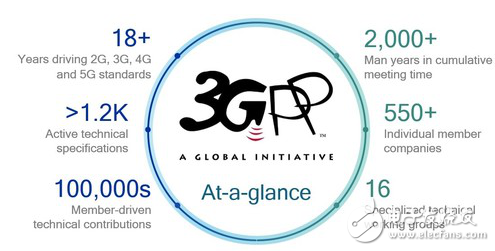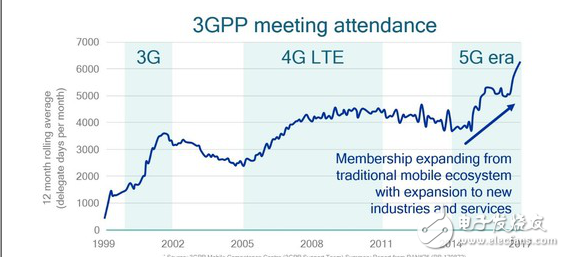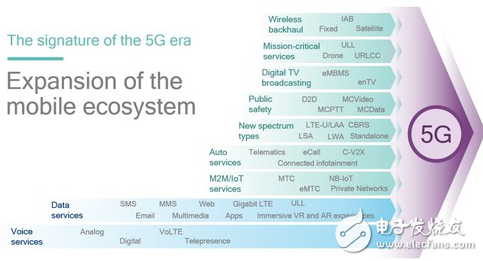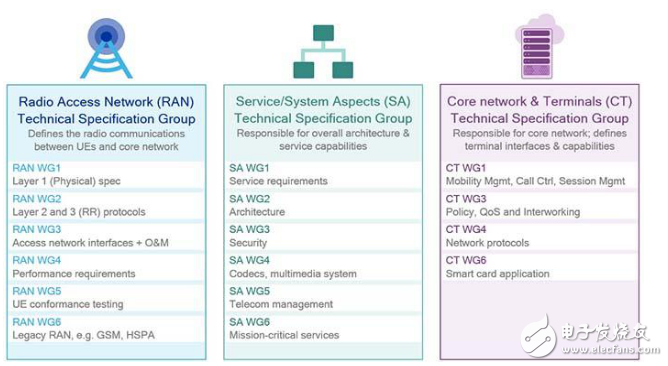Ordinary mobile phone users often spend about three or four hours browsing the web through smartphones, searching for information, and so on. Based on these applications, a high-speed Internet is needed, and the global 4G and 4G LTE wireless/cellular technology standards are powered by these mobile broadband connections.
As we move into the 5G era, we are developing the next generation of wireless technology standards. 5G will not only usher in the next generation of enhanced mobile broadband experience, but also expand cellular technology to almost every industry.
But where do these technical standards come from? Who will create these standards? How is the standard maintained?
Despite the revolutionary impact of these technical standards, the industry is not well aware of how 3GPP designs and drives the application of these standards. In addition to the mobile industry and enterprises in the ecosystem, most people have never heard of 3GPP, even in the mobile field, there are many misunderstandings about 3GPP.

It is increasingly important for the industry to understand how 3GPP develops 4G and 5G standards, because the expansion of mobile ecosystems far exceeds the scope of smartphones. From car to public safety to the rise of the Internet of Things, more and more industries are gradually becoming more and more Relationship with the 3GPP ecosystem, see participants in the 3GPP conference below

In addition, the transformation to a new generation, such as the transition from 4G LTE to 5G, is an important turning point in the development of the industry. While cellular technology standards continue to evolve, these new technologies are driving innovation across the industry. And because 3GPP is an organization that relies on companies such as Qualcomm to contribute technology, it also offers the company a leading position in next-generation technology.

With the advent of 5G, it is important to push the ecosystem to new developments. As shown below, 5G extends the mobile ecosystem to new industries, new spectrum bands and types, new deployments, new services and new user experiences. This expansion is more than ever requiring 3GPP members to drive the leadership of the cellular ecosystem in new directions.

Several misunderstandings of common 3GPP
1. 3GPP develops technical specifications, not standards.
3GPP is an engineering organization that develops technical specifications. These specifications are then translated into technical standards by the seven regional standards organizations (SSOs) that make up the 3GPP partnership (as shown in the following figure). Regional SSOs are also responsible for the development and implementation of intellectual property (IPR) policies.

2. 3GPP is a member-driven organization.
In addition to managing the 3GPP website, all engineering work in 3GPP relies on R&D, technical inventions, and collaboration from ecosystems and individual 3GPP members around the world. In fact, even if the chairmen and vice-chairmen of different 3GPP groups are selected from member companies, they should act fairly on behalf of 3GPP.
3. The work of 3GPP is carried out in a decentralized, piecemeal manner. The overall end-to-end supervision is limited.
3GPP has defined the specifications for a complete end-to-end cellular system, including user equipment, wireless access, core network and service framework. However, the complexity and scale of these systems require that the work of these specifications be divided into smaller, more specialized parts (eg RF, security). Therefore, 3GPP is divided into 16 specialized working groups (WGs), as shown in the following figure. These working groups and the three Technical Specification Groups (TSGs) are the completion of most technical work and decisions.

5G is perhaps the next generation of technology transformation in the industry. It not only provides new levels of performance and efficiency to enhance today's mobile broadband services, but also extends the mobile network to a unified use of a wide range of use cases. 3GPP began research and development in the 5G field in 2016, 5G NR (air interface) and next-generation network architecture 5G NextGen defined 5G global standards to meet these requirements. At the same time, 4G LTE continues to evolve as it will play an important role in the next generation of 5G networks. In fact, 4G LTE and 5G NR are expected to be submitted together to meet ITU 5G (or IMT-2020) requirements.
This classified product melatonin/sleep e-cigarette is a safe nic-free sleep aid product. Its effect increases slowly and gradually.
It is similar to aromatherapy, but it is replaced by oral inhalation. If you don't want to contact nic but have insomnia
symptoms, you can try this e-cigarette.
melatonin sleep vape, melatonin e-cigarette disposable, melatonin e-cigarette kit, melatonin e-cigarette pen,melatonin e-cigarette vaporizer
Ningbo Autrends International Trade Co.,Ltd. , https://www.vapee-cigarettes.com
![<?echo $_SERVER['SERVER_NAME'];?>](/template/twentyseventeen/skin/images/header.jpg)